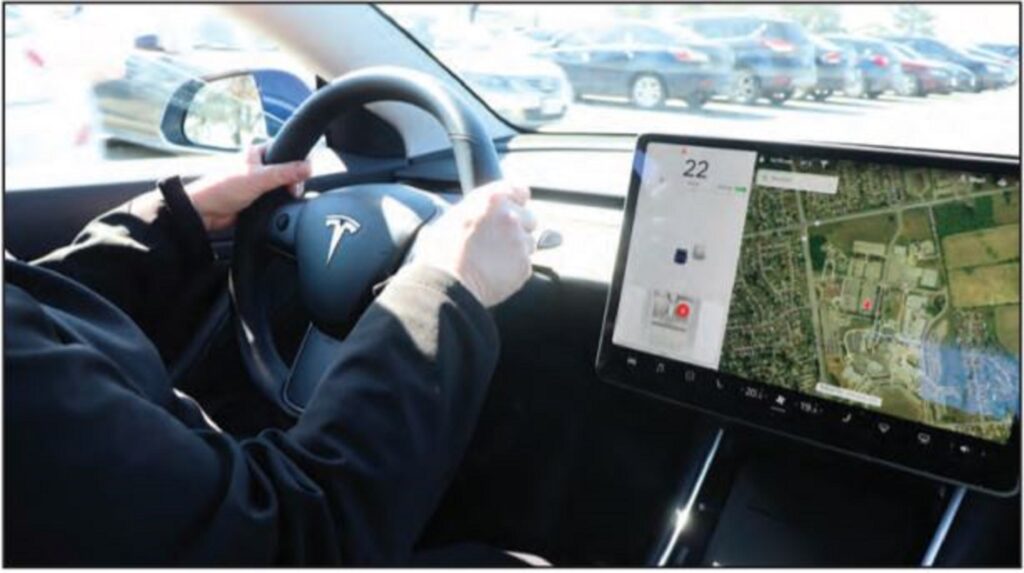Electric cars, we’re told, are the future. But are they ready now? Some facts and myths about the fossil-fuel alternative. Story and photos by Theresa Redula
By THERESA REDULA
Published Nov. 26, 2019 (Niagara News)

Anything new tends to make people nervous and skeptical. Electric cars are relatively new and everything about them is different compared to gas-powered vehicles: refuelling, engine, expenses and such.
Since electric vehicles made headlines and have become stars in automotive industry competitions, dozens of myths have surfaced and negatively impacted the reputation of electric vehicles. This caused people to be hesitant about buying an electric vehicle.
Bryan Mewhiney, Niagara College’s Renewable Energies Technician co-ordinator and professor, says that the claims about electric vehicles being short-ranged is “definitely a myth.”
Electric vehicles are not limited when it comes to range. In fact, Tesla S, a pure electric vehicle, has around 539 kilometres of range and 500 kilometres on full charge. This is more than enough for an average commuter to get back and forth to work, says Mewhiney.
When it comes to electric vehicles being slower, Mewhiney says that a Tesla can go from 0 to 60 miles per hour, or around 96 kilometres per hour, in 2.4 seconds.
Sheri Waldie, a Niagara College library technician who owns a Tesla Model 3, says that because there is no transmission and no gear changing, her pure electric vehicle “is like a rocket ship. It goes faster and faster.”
Mewhiney adds that there is also Formula E racing, which is an electric racing circuit, just like Formula One racing.
Although electric vehicles cost more compared to gas-powered vehicles, Waldie says that buying the car is worth it because of the fuel savings.
Waldie adds that she pays less insurance for the car because of its higher safety rating.
Mewhiney compares the Chevrolet Volt Plug-in hybrid to Chevrolet Cruze, which he says is roughly comparable in size, capacity and usability.
Considering everything from the car price and the cost of fuel or charge per kilometre, Mewhiney says that the Volt hybrid is actually a smarter choice for a vehicle compared to the gas-powered Cruze.
“At the same usage, we’re looking at a total price on 10 years: $48,400 for Cruze versus $48,500 for Volt hybrid,” says Mewhiney. “If gas prices go up, the Volt is a more economical vehicle, especially if you drive more.”

Waldie says that electric vehicles are “extremely practical and very user-friendly.”
She says that her Tesla Model 3 tells the driver where all the Tesla superchargers are with how far the car is from it.
For other electric vehicles, Mewhiney adds that there is a website called chargehub.com that shows charging stations and tells the driver if a charger is being used in real time.
In fact, there are two charging stations by Niagara College Welland campus and one charging station at the Seaway Mall.
Rumours about electric vehicles say these cars are unsafe because the lithium batteries are dangerous and can explode.
Mewhiney answers, “So can gasoline. Everything’s unsafe right?” He says that in reality people accept the risks, including the lithium batteries that they use every day: laptops, phones, smartwatches and such; these electronic gadgets have the ability to rapidly release energy if mishandled in some way.
Waldie also says that she does not experience any issues with her electric vehicle’s batteries.
Myths also say that electric vehicles are not “greener.”
Mewhiney says this myth particularly applies to the U.S., where a number of electric power plants are coal- or oil-powered.
However, he says that in Canada, a large percentage of the energy comes from zero emission sources and low carbon sources such as natural gas, hydroelectric generation and solar and wind power plants.
Mewhiney concludes for this myth that electric vehicles are greener than gaspowered vehicles depending on where drivers use it and where they charge it.
The batteries are reprocessed into the same thing or into secondary materials, contrasting misconceptions about them ending up in landfills.
“Batteries are not supposed to go to landfill,” says Mewhiney. “There’s specific diversion for batteries in general so materials can be processed into other materials.”
The increase of electric vehicles on streets meant the increase of concerns over the power grid crashing if millions of plug-in vehicles charge at once.
Mewhiney says that as more people buy electric vehicles, it’s becoming more likely.
He says, however, that there is already a tool to throttle the load during high-peak areas in time when there’s overload on the grid, which can be applied to electric vehicles.
Myths about electric vehicles also say that these vehicles take too long to charge. Mewhiney says there are actually several types of charging stations: DC fast charging stations that can get the car some hundred miles of range in 15 minutes, the level two charging stations can charge the car enough to go home if a driver’s coming from work and, for most, their home charger can charge it in eight to 12 hours.
Waldie chooses to charge her electric vehicle between midnight and 4 a.m. She also adds that the vehicle stops charging the moment the battery gets full so the car is not charging needlessly.
Mewhiney says that the only real issue with charging is when the driver has to stop for hours just to charge the car while on a thousand-kilometre journey.
Overall, Mewhiney says that electric vehicles are “absolutely” the technology for the future because have the potential to replace gaspowered vehicles.
Waldie says that electric vehicles are “a lot better” because there are no emissions.
“Cars spew out so much pollution. It’s just nice to be able to drive a clean vehicle and feel good about it,” says Waldie. “When we first got it, my son who is 19 said ‘I’m so excited because this is the future.’”
People are only doubtful about electric vehicles because they don’t understand the technology, says Mewhiney.
Waldie adds that drivers like her take “a little bit to get used to it,” because they are nervous at first.
Mewhiney says the public needs more education on how electric vehicles work. He admits there are risks, similar to gas-powered vehicles, but that electric vehicles are perhaps even safer.




